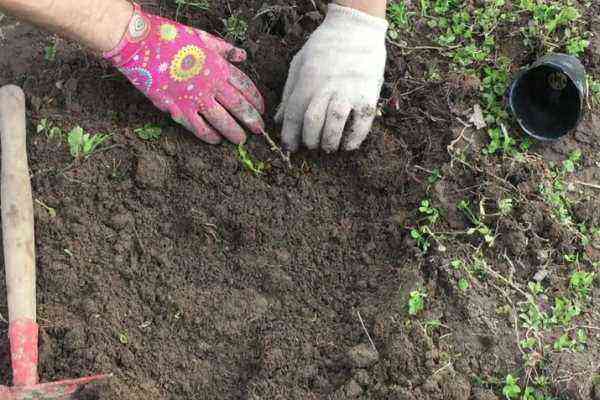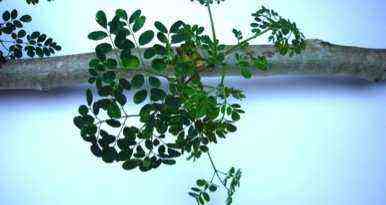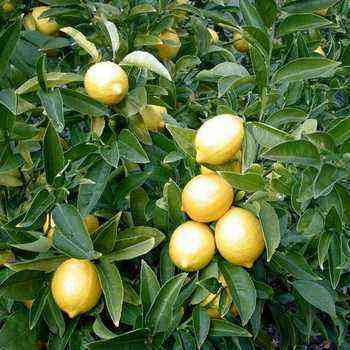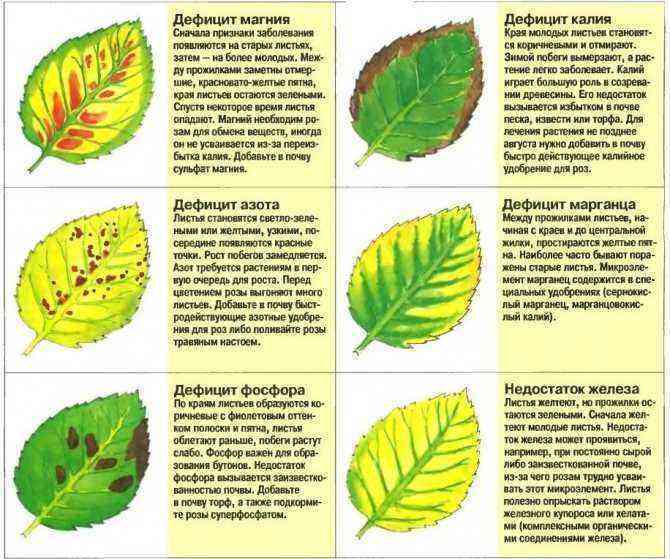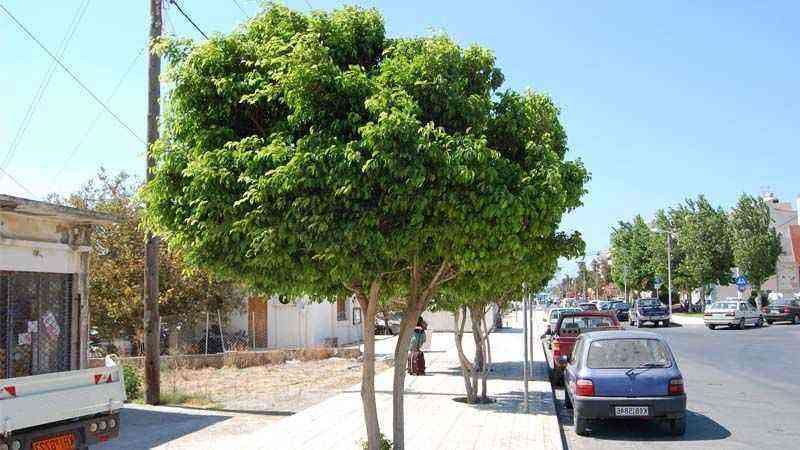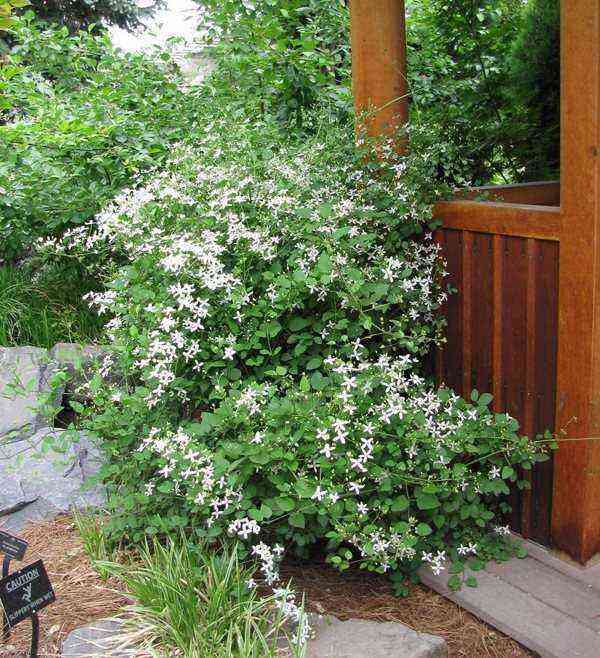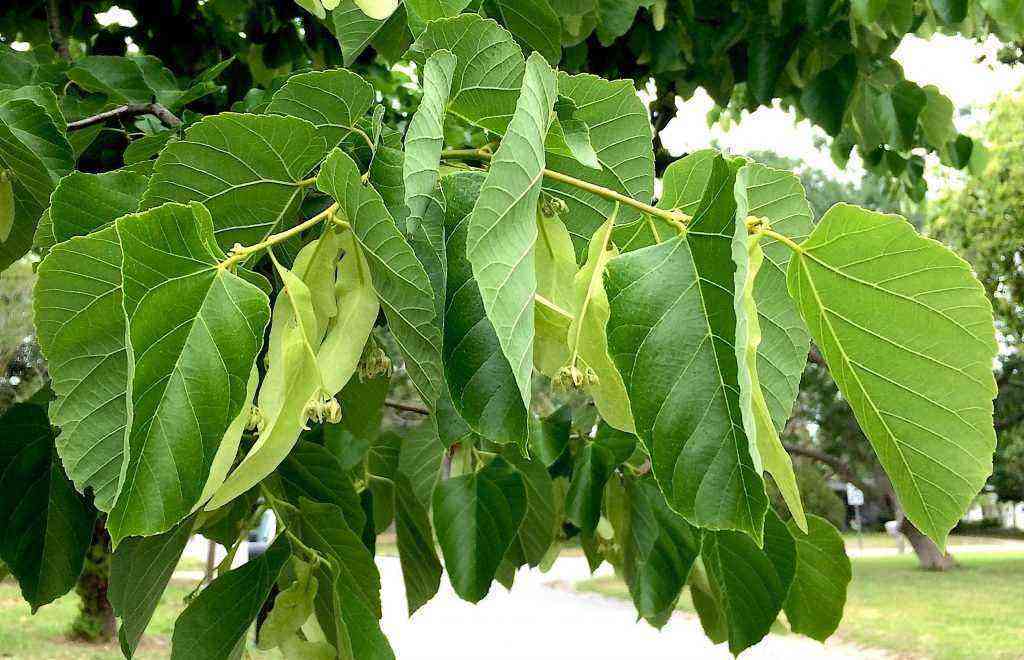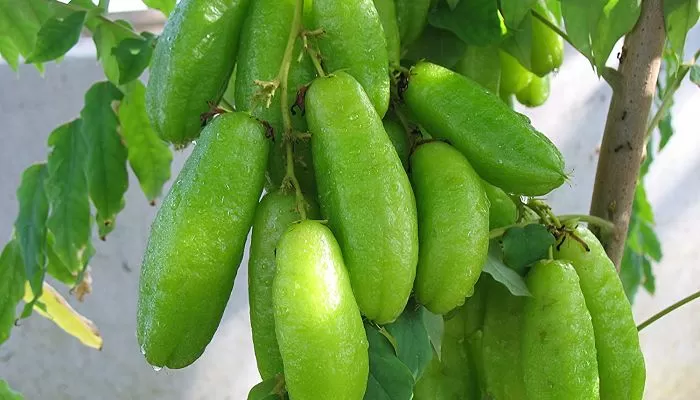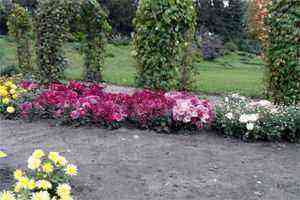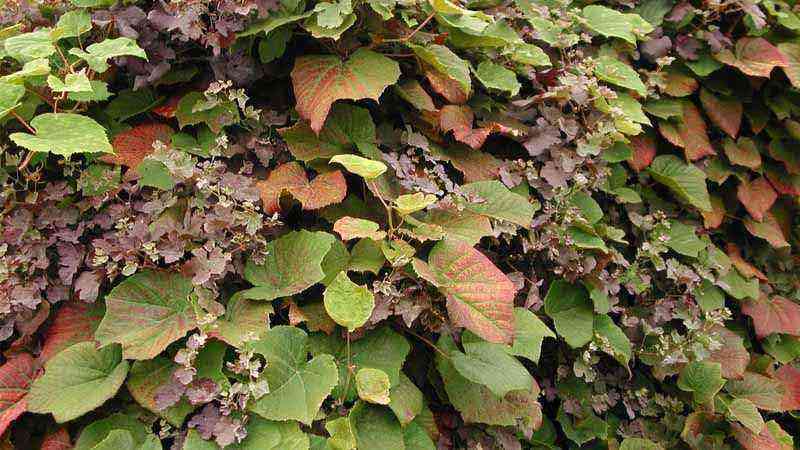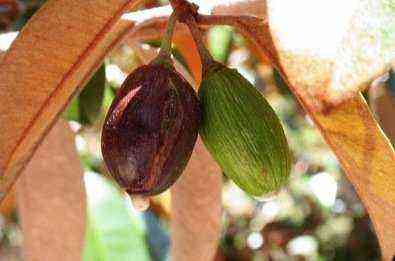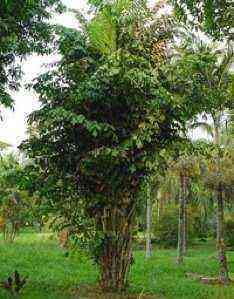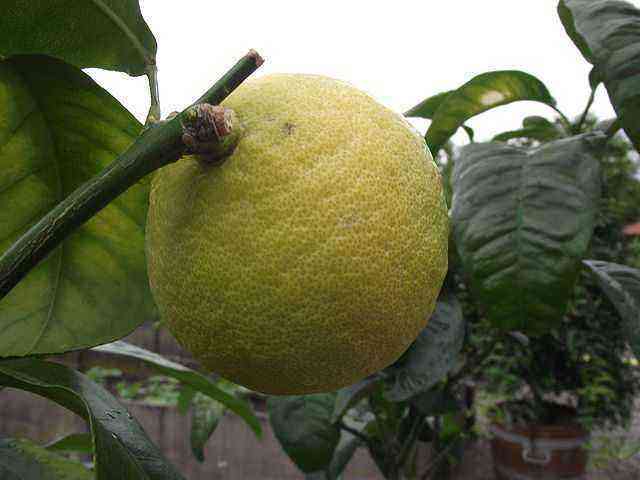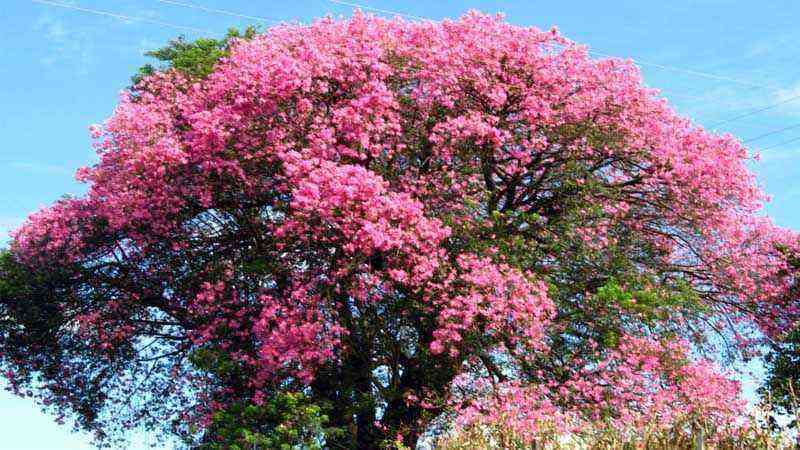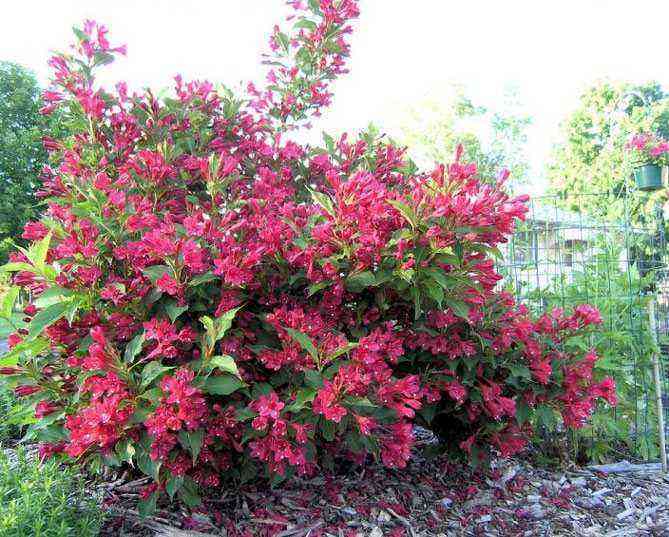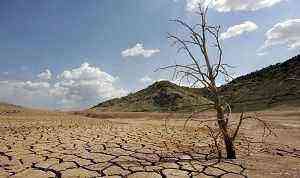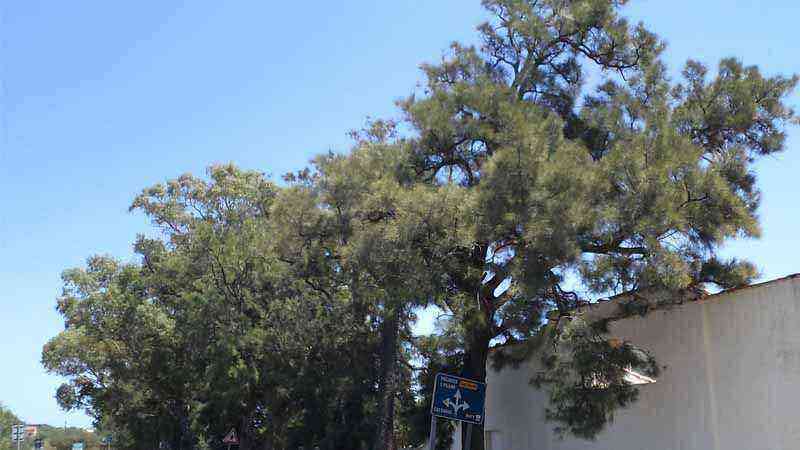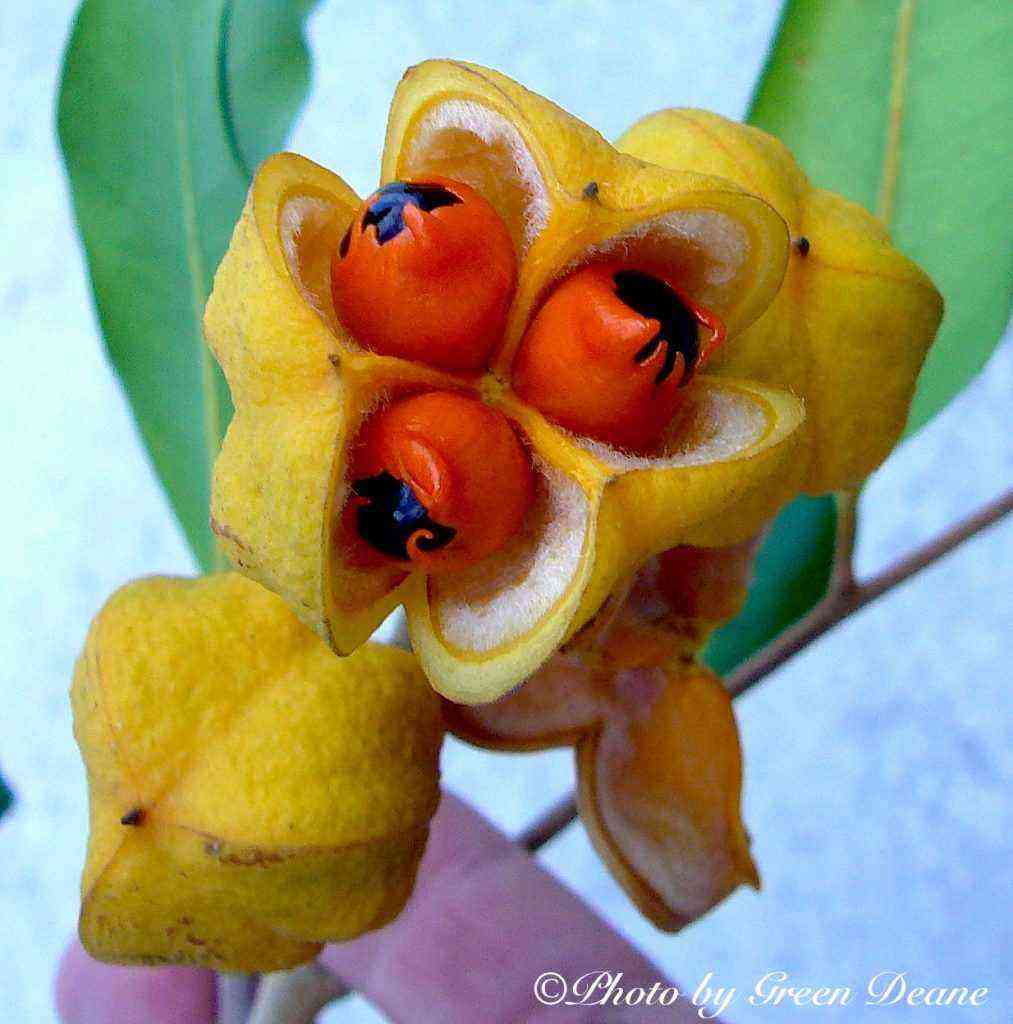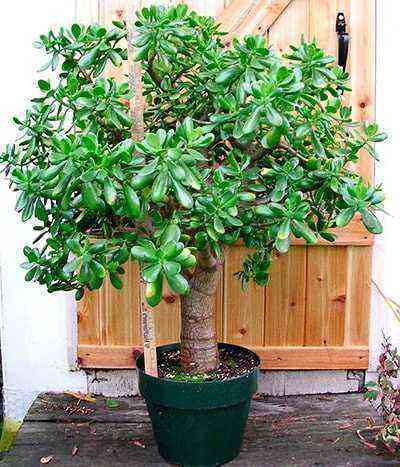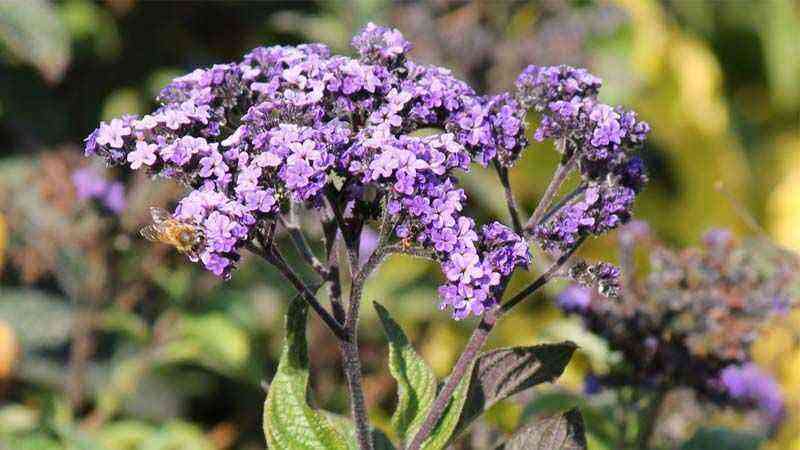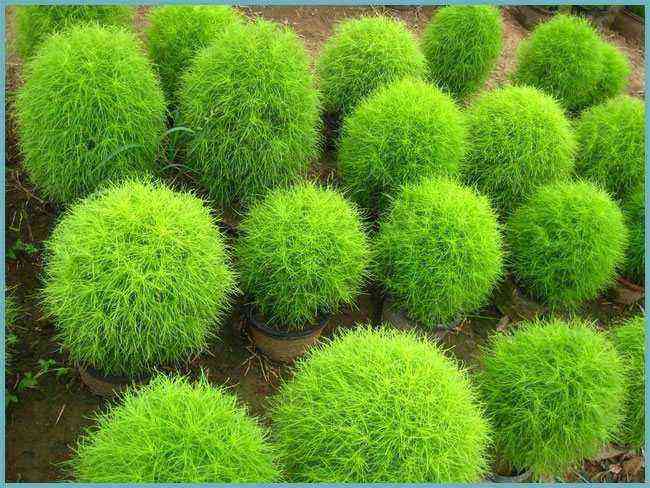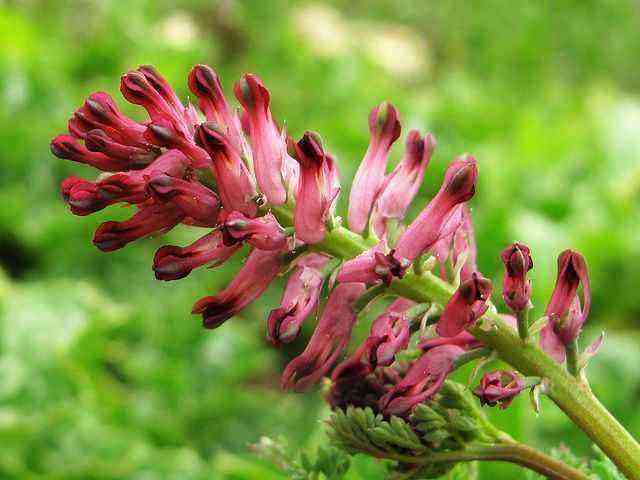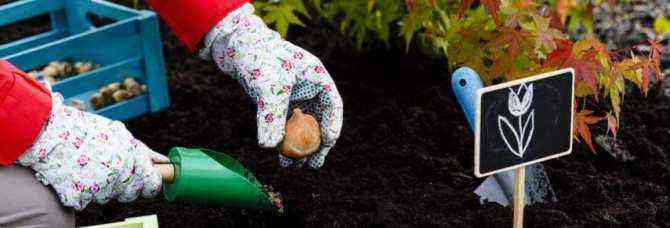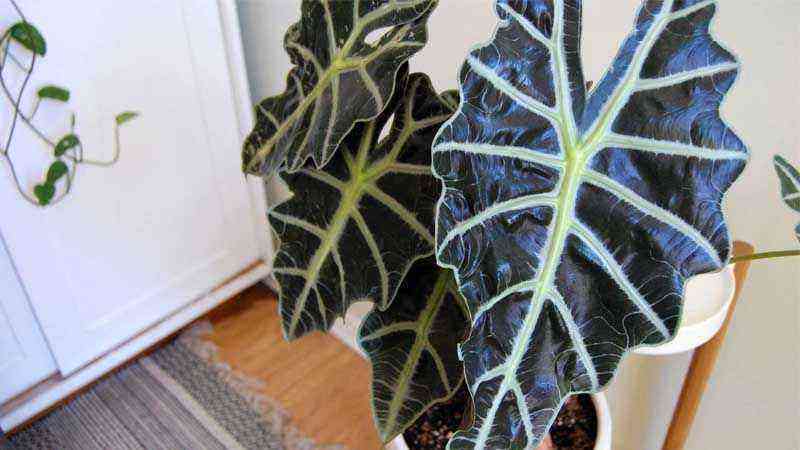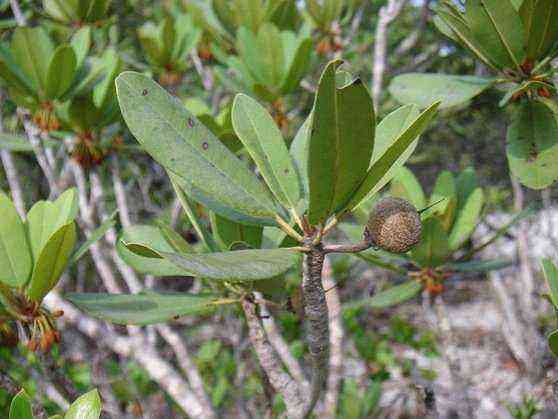Features of the plant clematis burning small-flowered
The stinging species of clematis belongs to the group of “wild”, landscape varieties that, with their natural appearance, give the impression of plants created by nature, and not masterpieces of breeders. This small-flowered clematis is dotted with star-like flowers gathered in a light cloud.
It is found in the Mediterranean, in northern Africa, in Asia, where it has been known for more than three centuries. Here it grows from Tver to Rostov, and rises in height up to one and a half meters. In nature, in warm regions, this tall liana reaches up to 3-5 meters. Massive filamentous roots secrete substances that irritate the mucous membranes of the nose and eyes. Hence the name of the plant.
Small, up to 3 cm in diameter, flowers of pungent clematis are white with a greenish tinge. They are collected in inflorescences and have a pleasant almond scent. Clematis bloom begins in July and lasts 2-3 months. One shoot can have from 200 to 400 flowers. The red-brown seeds of this clematis are very decorative.
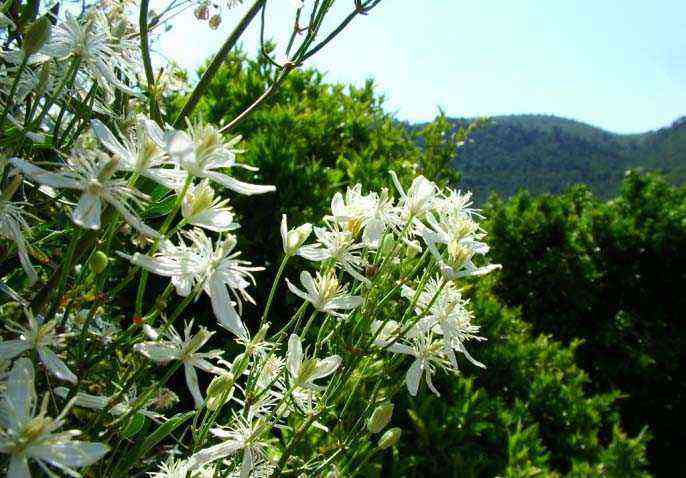
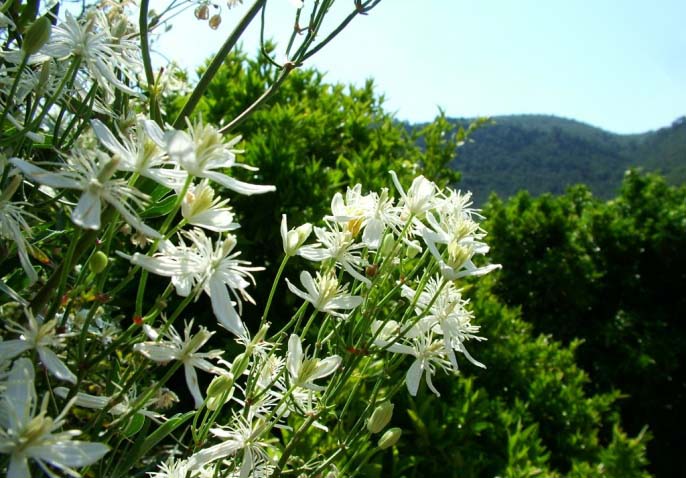
Problems that can be faced when growing clematis
| Problem | Cause | How to get rid of the troubles that have arisen? |
| Stagnant growth | In the second year after planting, in June, the growth of clematis reaches 20 centimeters and stops. This means that the care regimen has been violated. | To help the plant start to grow, it is necessary to increase the number of watering and double or triple feeding with nitrogen-containing fertilizers, such as urea. |
| Drying tops | If the tops of the creeper begin to curl and dry out, this means that the plant has enough watering or aphids have started up on it. | When clematis is affected by insects, it is sprayed three times with a decoction of tobacco dust or hot pepper, while maintaining an interval of 3-4 days. If traditional methods have not helped, you can use chemicals. |
| Chopping bloom | If the flowers of pungent clematis cease to form lush clouds, then most likely this means that the suction roots that are at a depth do not receive moisture. | In this case, a shallow trench is dug around the plant and water is poured there when watering. This trench can also be used for fertilization. |
Clematis pungent is a very beautiful plant that can be used to decorate any garden area. It will add tenderness and airiness to any composition. A pleasant bonus for any gardener will be unpretentious care. and good frost resistance.
Planting and care
Plant agrotechnology is as follows:
- Planting clematis is carried out in early autumn or spring. The soil should be light, neutral or slightly alkaline. Before planting, you need to deeply loosen the soil, add compost, humus, mineral fertilizers.
- The pit for planting should be 60 by 60 cm. The seedling is cut before this, leaving only a few buds. A firm support is installed in a hole, half filled with earth, and the roots of the plant are spread. Its root collar plunges into a depth of 10 cm.
- The seedling is watered abundantly, shaded from the bright sun, the soil around it is mulched with leaves, peat with a layer of several centimeters. There should be at least a meter between the plants.
- Lack of sunlight has a detrimental effect on clematis. Therefore, a well-lit and windless place is chosen for plants. the wind breaks, shoots and damages flowers.
- Clematis is a moisture-loving plant, but an excess of moisture is harmful to it, so watering is plentiful, but not too frequent. The water should fall under the root, and not on the leaves and flowers.
- Top dressing is carried out alternately with mineral and organic fertilizers once a month. With the same frequency, the plant is watered in the summer alternately with weak solutions of potassium permanganate and boric acid.
- Regularly renew the mulch layer.
- Also, burning clematis is tied up all summer.

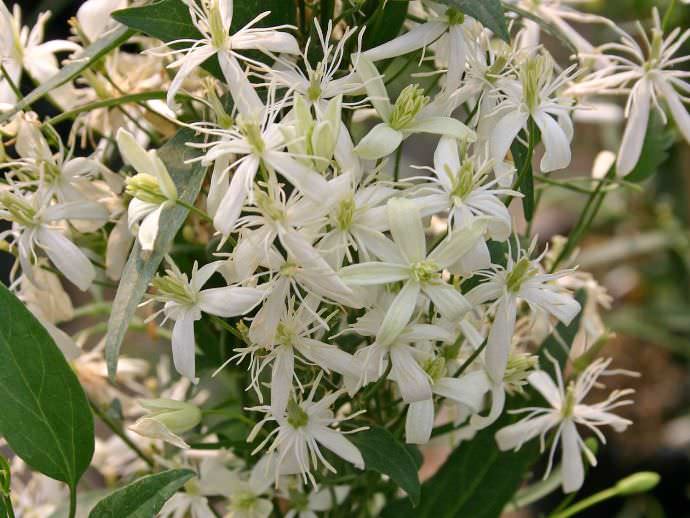
Trimming rules
Throughout the season, the plants are constantly cleaned from dried and broken shoots. But pruning them in the fall is especially important.
- Clematis blooms mainly on new shoots, so in the fall, you need to cut off its entire ground part with a long and thin knife, leaving only a couple of nodes. This pruning of clematis makes it easier to care for it in the winter.
- After that, the plants are spud up to a height of 10-15 cm with mulch or dry soil.
- Then they are covered with a box or a layer of peat, sawdust or dry leaves.
- They complete the winter protection of plants by covering them with a film on top. In this case, it is necessary to leave holes on the side for ventilation.
Planting seedlings in a permanent place
Almost all varieties of white clematis differ in that they are incredibly resistant to frost, and in general they do not need to use any special rules for planting or subsequent care. In order for clematis to turn out to be large, healthy, stately and decorative, it is necessary from the very beginning to take care of choosing a place for planting clematis.
As a rule, these plants prefer to be in partial shade or in sunny areas, but on the condition that the sun does not cause burns on the surface of the leaves. About six months before the gardener starts planting clematis in open ground, it is recommended to feed the selected area.
To do this, the land on the site is carefully dug up, and substances such as humus, superphosphate and dolomite flour are added to it. Do not be afraid to mix mineral fertilizers and organic matter, since only from such a duet can plants receive all the necessary substances and trace elements, and this is really extremely important and necessary.
Further, the gardener purchases seedlings. It is best to do this in specialized nurseries or purchase from hands, but from trusted gardeners. Planting material should be carefully selected, viable and strong buds should be viewed on the shoots, which will just be a sign that the seedling is quite alive and can be purchased for planting.
The root system should also be strong and voluminous, there should be absolutely no damage on it, because otherwise these damage will serve as an excellent environment for the development of bacteria and microorganisms that will provoke a variety of diseases. It is best to soak the root system in growth promoters before planting. Thus, the plant will receive additional protection, and the root system will acquire more opportunities for early adaptation and rooting.
– at the very beginning, the gardener digs a hole for planting. It should be 40x40x50 centimeters in size. If the gardener has decided to carry out not a single, but a group planting, then the distance between the pits must also be observed. It should be at least one and a half meters, so that when the bushes grow, they do not interfere with each other, do not touch each other and do not shade each other.
At the very bottom of the pit, it is worth laying a drainage layer, its thickness should be at least five centimeters and no more than ten centimeters. Crushed stone, expanded clay or broken brick is usually used as drainage, since these substances will remove all excess moisture that can accumulate in the root system, thereby reducing the risk of dangerous diseases
– a seedling is placed in the hole, the roots are carefully straightened, the gardener makes sure not to cause any mechanical damage to the root system. A support should be installed next to the seedling, the height of which should be about two meters. The roots are covered with soil, but the hole should not be filled to the very edge. Sprinkle the soil in layers, each layer is slightly compacted so that air pockets do not appear
We invite you to familiarize yourself with Polycarbonate above the porch
– planting should be completed with very generous watering with warm, settled water. the hole is also filled with mulch. Mulch helps to keep the soil warm, slows down the process of moisture evaporation, and also protects the plant from pests and bacteria in general, which is also worth paying attention to and not neglecting these processes and basic care measures.
After planting is complete, clematis should be watered once every two days, but the seedling should receive a moderate amount of water – no more than three liters. If the vines are already adults, then watering should be regulated depending on their size and how much they have grown. Usually, one bush of an adult clematis takes from 7 to 10 liters, sometimes a little more if the weather is hot and dry.
The duration of the flowering of clematis also depends on how much nutritious soil surrounds the plant’s root system. In this regard, the site should be periodically fed, and for this, depending on the season, use different mineral and nutritional compositions. For example, in the spring, it is best to take urea or saltpeter for feeding, but in the summer, mullein tincture is perfect, which is carefully applied right under the root.
Also, attention is paid to feeding in the autumn period, since at this time the plant is being prepared in frost, and it must be secured and strengthened as much as possible. Therefore, in the fall, they take more complex mineral preparations that ideally increase the immune system of plants. If the gardener plans to prune clematis, then about two to three months before its implementation, it is necessary to stop feeding, otherwise they will provoke too abundant growth of shoots that the plant does not need at all.
Of course, it is important to pay sufficient attention to the soil – it should be loosened after each watering, and mulched. All weeds are also removed as they can take away nutrients and can also become a breeding ground for pests and bacteria. If necessary, sometimes soil can be poured into the hole, and after that it is mulched.
Gardeners recommend using peat or dry grass, humus or straw as mulch. In order for the plant to retain its decorative qualities and special characteristics, it is necessary to regularly prune the clematis. Pruning maintains the attractive shape of the bush or liana, and stimulates the growth of new shoots, which, in turn, give a more abundant and fresher flowering.
In the very first year after clematis was planted in open ground, the tops of the shoots should only be pinched slightly and very carefully. Thanks to the pinching, new buds are formed, which is a guarantee that the flowering will be abundant, and the growth of the clematis itself will be at its best. In the first season, it is also worth cutting off about half of all the buds that have formed.
Thanks to this, next year the plant will get even stronger, and the flowering will seem twice as strong and beautiful. At the very beginning of October, clematis is prepared for the winter period, it is watered abundantly, doing the so-called moisture charging. Usually, one seedling takes at least twenty liters of water, which should be settled, thawed or rainwater and always warm.
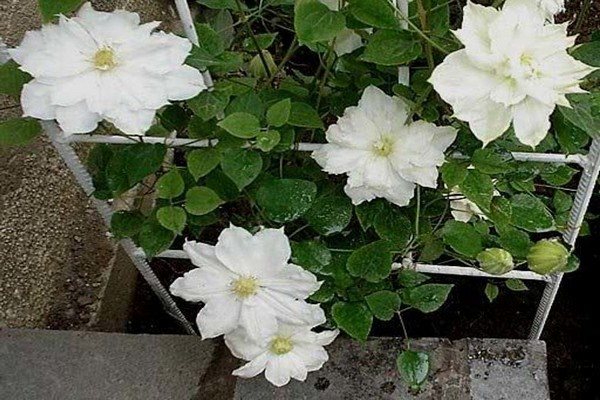
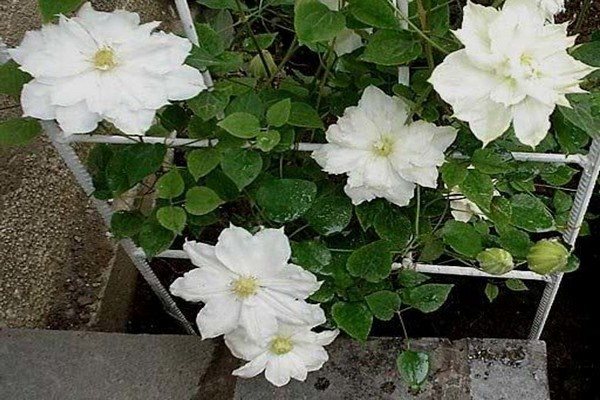
In addition, experienced gardeners recommend pruning the stems, leaving about 15 centimeters of branches above ground level. After that, the clematis is covered, it remains only to wait for the winter and frost to end. You can use agrofibre as a shelter, but you can also use peat or ordinary dry foliage, which also perfectly protects clematis from too harsh and severe frosts.
Clematis is a very unusual flower that is very often used in landscape design. Low-growing bushes can be planted together with rose bushes, and you can also make hedges, beautiful living curtains. Due to the fact that vines can curl perfectly, they can be wrapped around fences, arches, used to decorate terraces, outbuildings.
In order to make the design even brighter and fresher, white clematis can also be diluted with bright clematis, you can take delicate pink or blue shades that are ideally combined with a white clematis background. To make vines look spectacular, it is best to tie them to supports from the very beginning. You can also braid stones with lianas, it will look incredibly stylish and will become irreplaceable decorative elements in absolutely any design style.
If the gardener decided to make not one, but several beds at once within the landscape, then white clematis can become an ordinary background, while the flowers themselves will look very advantageous on it. Clematis also look amazing in flowerpots or pots, they can be displayed both inside gazebos and terraces, and outside, the main thing is to take care of the plants in order to maintain their decorative characteristics and external features.
Seating places are prepared in the fall: they dig a hole 60 cm deep and 40 cm wide.The drainage is laid on the bottom of broken bricks (or pure crushed stone, expanded clay) with a thickness of 8-10 cm, a peg 1 m long is placed in the center.At a height of 20-30 see fill the pit with good soil.
Choosing a future place for a plant is a responsible business. If the necessary conditions are not supported, then this will negatively affect the condition of the clematis, and the owner will have to solve many related problems.
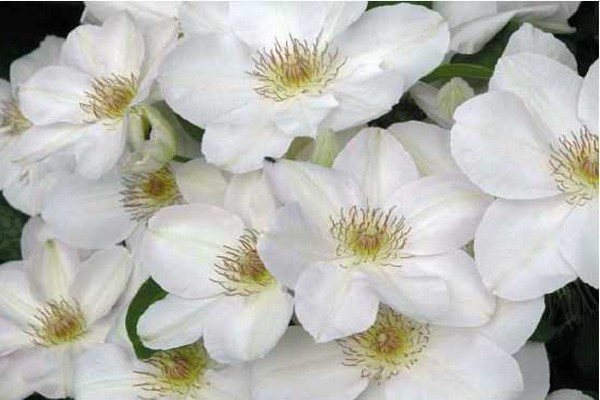
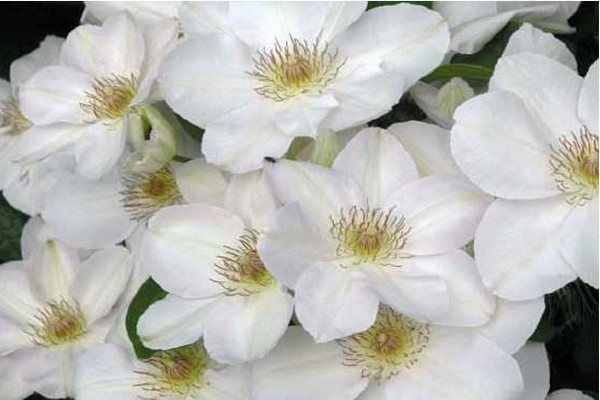
Despite the fact that the plant loves the sun, direct rays are undesirable. Otherwise, the petals will burn out and lose their brightness. Drafts and open spaces are also undesirable, where gusts of wind can break delicate branches.
Do not plant clematis near the fence, especially if it is metal. It inhibits the overgrowth process. In addition, the metal becomes very hot when exposed to sunlight, which causes flowers and leaves to burn.
Reproduction
To reproduce clematis, two methods are used:
Seeds are sown in April in open ground or in November – in a greenhouse. In the second case, they emerge even without stratification in July. Seeds are sown in containers with a mixture of sand and earth (1: 2) at a distance of 5–7 cm on the soil surface. They are sprinkled with a two-centimeter layer of peat and pressed down. Water the crops as needed through a sieve.
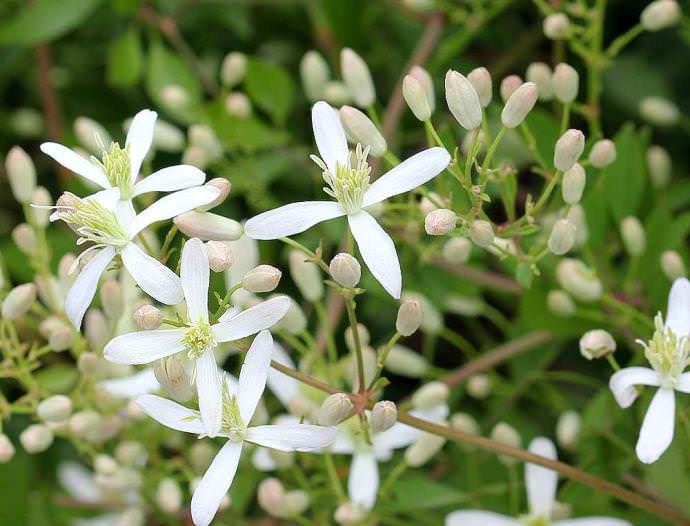
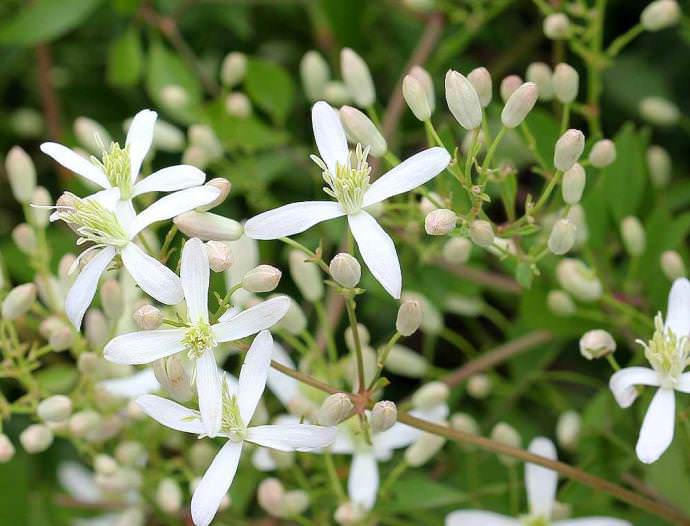
The vegetative method is divided into the following types:
- dividing the bush – an adult bush is dug up or dug in and divided into parts;
- layering – lateral shoots are laid in grooves up to 10 cm deep, pressed with staples, covered with earth. Next year they can already be separated from the mother plant;
- cuttings – planted cuttings are watered with special growth stimulants such as “Epin”, “Kornevin”, etc. The soil temperature should be at least 18 degrees. The fogging unit maintains a constant humidity. Also, plants should not be allowed to overheat when the sun hits them directly.
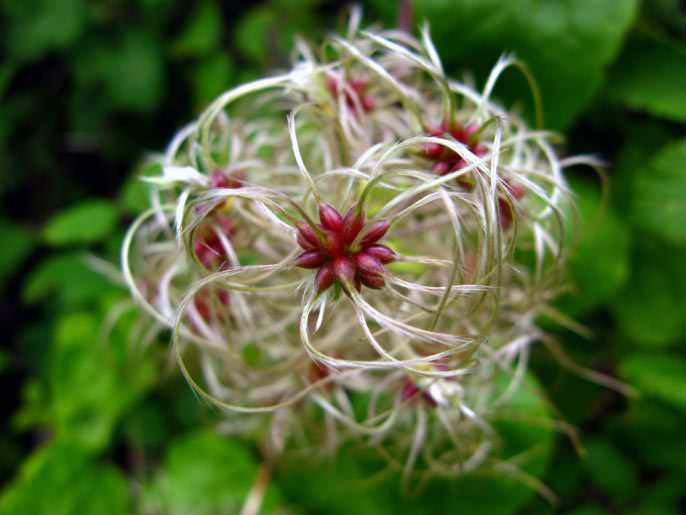

Propagate by seed and layering
| |
| General characteristics | Densely leafy highly decorative deciduous vine |
| Size | Height up to 5m, width up to 4m |
| Flowers | White 2-3 cm. Appears in June-July |
| Leaves | Emerald or dark green |
| soil | Loam, sandy loam |
| Illumination | Sun, partial shade |
| Winter hardiness | Growing possible even in northern latitudes |
| proklumbu.com ” src=”https://qlumba.com/wp-content/uploads/2019/06/fmg5d01e4d28e7ae3.jpg” alt=”table_pic_” w /> | 1. Seeds |
Process:
- collect ripe seeds in the second half of October;
- clean them of crests;
- carry out stratification at temperatures up to – 5 degrees;
- sow seeds in open ground in spring;
- water as needed;
- seedlings will appear in a few weeks.
With seed reproduction, all varietal characteristics are preserved, clematis bloom 3-4 years after planting
Pests and diseases
Clematis are mainly affected by a fungal infection – powdery mildew, rust, gray rot, etc. Wilt is very dangerous for them. In this case, the affected shoots are to be burned, and the bush is watered with a 0,2% solution of foundationol at the root. This is done both in autumn and spring. Sometimes the entire aerial part is cut off, burning it, and the soil is treated with an antifungal solution. Healthy plants grow from new buds. If all the measures taken do not help, then the plants, along with a clod of earth, are destroyed, and the soil is watered with the same preparation.
As a rule, compliance with all the rules of agricultural planting and caring for plants is a good prevention against fungal diseases. If, however, calendula and marigolds are planted next to clematis, then they will shade the roots, and with a specific smell – scare away pests. In addition, yellow-orange annuals effectively set off the white inflorescences of pungent clematis.
You may also be interested in an article in which we talk about planting the main types of maiden grapes.
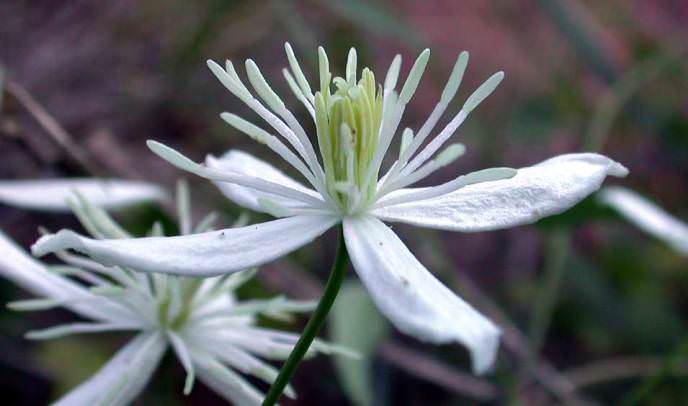

History of origin
The vast genus of plants Clematis (lat. Clématis) was previously known under the name “Lomonos” or “Lozinka”. Clematis translated from Greek means “vine”, “curly”. Indeed, liana-like and climbing stems are typical for most Clematis species. According to some sources, the name “Lomonos” appeared in Russia when this shrub was compared to impassable thickets, in which it was easy to break your nose if you fell. According to others, the name is associated with the unpleasant odor of the rhizome, which can greatly irritate the nasal mucosa.
In nature, there are more than 300 species of Clematis, differing from each other both in appearance and in the characteristics of growth. Among the variety of species, Clematis pungent confidently occupies a leading position.
Clematis flammula (Clematis flammula) belongs to the Buttercup family and is perfectly adapted to growing, both in the southern and northern regions. This is due to the area of origin of the plant – North America and Southern Europe. This versatility has allowed the shrub to gain popularity in a number of countries, including in the temperate climatic zones of the Northern Hemisphere.
In the wild, Clematis pungent grows on the shores of the Mediterranean and Black Seas, in forest stands and thickets of shrubs.
All Clematis varieties are divided into three groups:
- form flowers on last year’s shoots (group A);
- form flowers on shoots of the past and current year (group B);
- form flowers on the shoots of the current year (group C).
Clematis white pungent belongs to group C, is distinguished by abundant flowering and refined aroma.
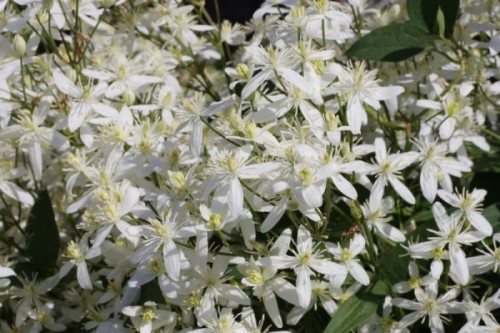

Combination with other plants and application in landscape design (photo)
- Small-colored clematis are suitable for the formation of decorative screens – their support is hidden by lianas, and the white-green carpet of leaves and flowers seems to float above the ground.
- On supports – trellises, pedestals, next to the sculpture or without support at all, clematis will no longer act as a liana, but a full-fledged flowering bush or snow-white flower carpet.
- Using a variety of supports, it can be used to create any kind of framing, for example, entrances and windows. He can hide any walls, hedges, braid gazebos, columns, trees, etc. This creates a romantic atmosphere in the garden.
Clematis pungent looks very harmoniously in combination with other contrasting or similar in color varieties of clematis.
They get along very well with bushes of lilac, mock orange, forsythia and spirits. They also perfectly decorate the crowns of trees, creating a symbiosis of greenery and a lush, long flower garland in the sunlit areas. The neighborhood of clematis and curly light roses, girlish grapes, honeysuckle, ivy looks festive.
Reviews of summer residents
Irina, 61 years old, Moscow region
I have long wanted a small-flowered species clematis, but the prices for seedlings are kept at such a level that I have postponed the purchase for several years. In the year before last, I still could not resist: I wrote out “burning” by mail. In the first summer, he did not bloom, only grew a few stems about a meter long. But in the second year I already had a small blooming “cloud” with an absolutely incredible aroma. The plant turned out to be very cute and completely hassle-free. When I was very young, I carefully watered and fed him, but last summer I had to leave the dacha for two weeks in the very heat. I was very worried about clematis, I was afraid that it would dry out without watering. However, everything worked out: not even the leaves wilted on it. A good vine, there is very little work with it. And before winter, you do not need to cut or cover. In general, I am pleased with my purchase.
Victor, 55 years old, Kursk
On our site, clematis burning has been growing for more than 15 years (inherited from the previous owners of the dacha). The blank western wall of the house is completely covered in summer, as if a white blanket was hanging. There are practically no worries with him: in the fall, remove the dry mass of branches and leaves, and in the summer, make sure that the bush does not thicken. We water it only in a big drought, we feed it occasionally, and that’s it. The seeds on the bush are always – the sea, they look very beautiful. Several years ago, they began to notice that in the spring they sprout like a “self-seeding” both on our site and on the neighboring ones. So now we have our own planting material, and without any hassle. We sit along the fences and give to friends.
Margarita, 57 years old, Ryazan
A seedling of this species was presented to me 5-6 years ago. They bought it like a Manchurian, but it turned out to be burning (a re-grade happened). At first I was upset, but now I don’t regret it. A flowering bush of amazing beauty! I have it growing near the gazebo, the backdrop for a red climbing rose. It looks very cool, and the aroma during flowering is such that the bees swarm around the site all day. Now I want to make layers of clematis. Then I will plant them near the fence, so that it will be beautiful there in the summer. Such a decorative and easy-to-care vine is rarely seen. I recommend to everyone!
How to plant clematis (video)
Clematis burning is one of the most widespread and popular types of clematis in domestic gardening. It attracts with good frost resistance, unpretentiousness and durability, long flowering. The use of this plant in garden decoration is extremely diverse, its flowers are beautiful and fragrant.

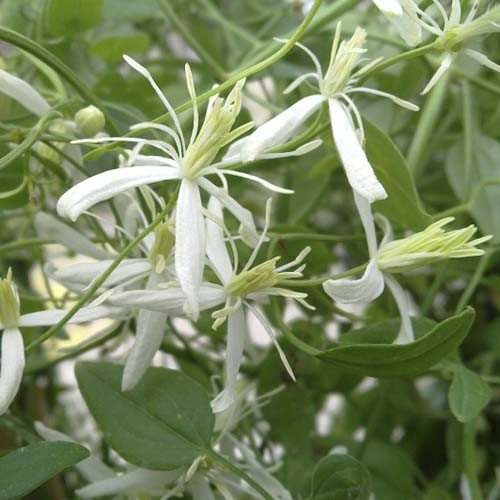
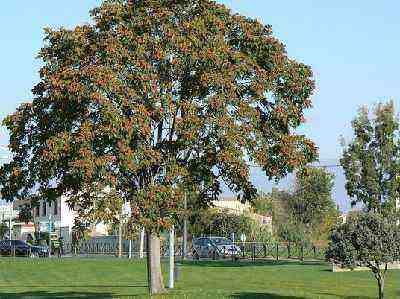
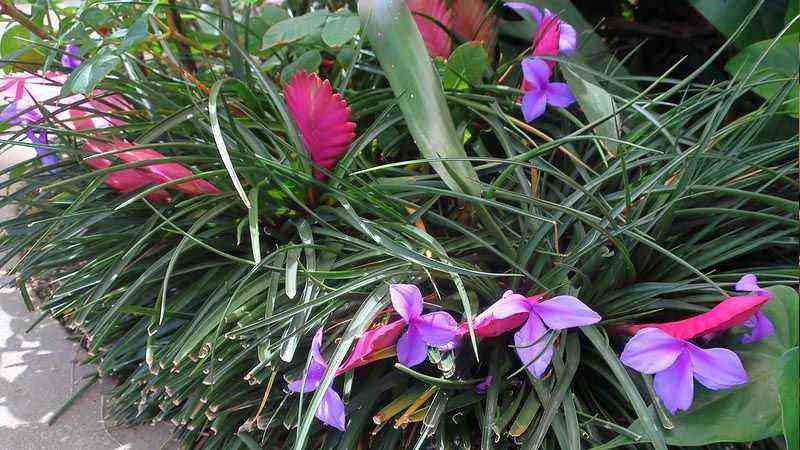
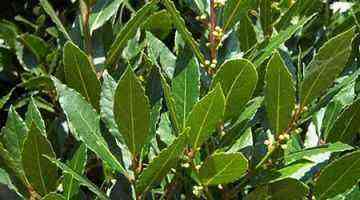
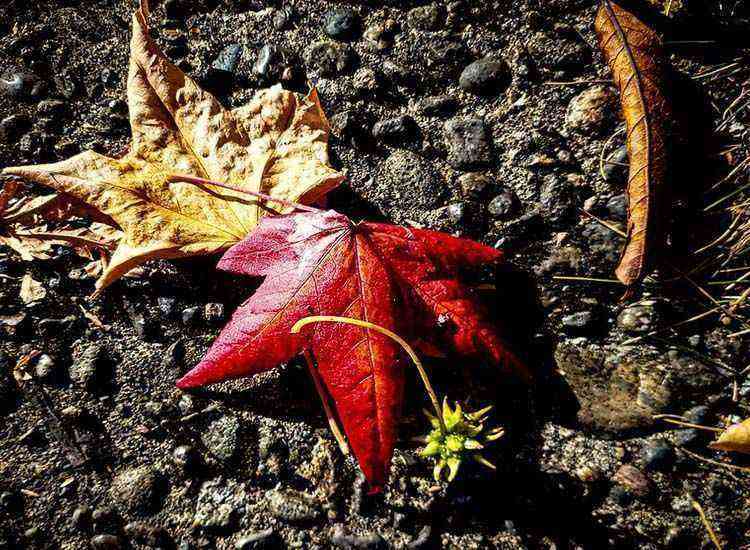

![Cultivation of Manihot esculenta [Cassava, Cassava] Cultivation of Manihot esculenta [Cassava, Cassava]](https://farmer-online.com/wp-content/uploads/2021/05/Cultivation-of-Manihot-esculenta-Cassava-Cassava.jpg)
